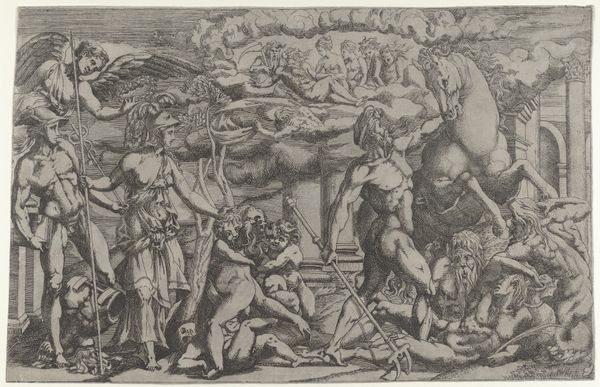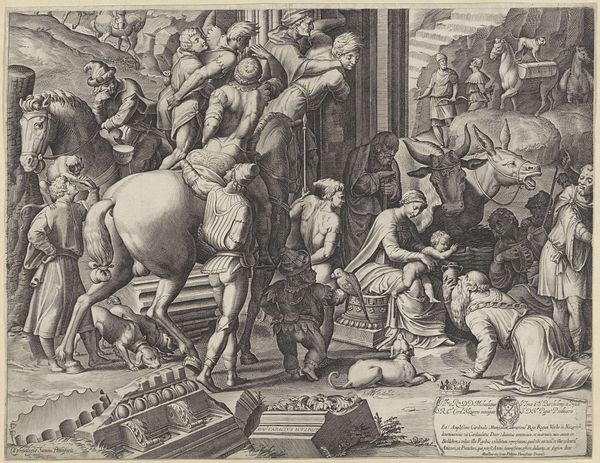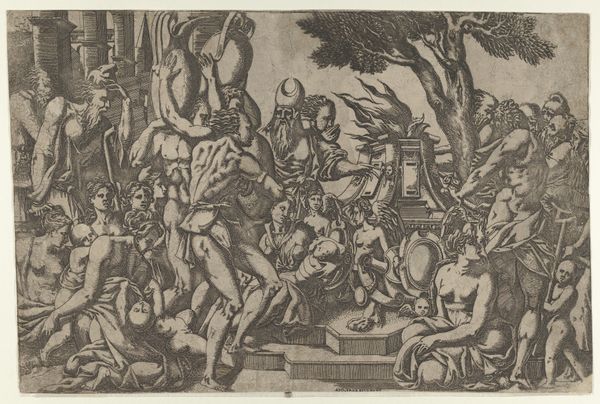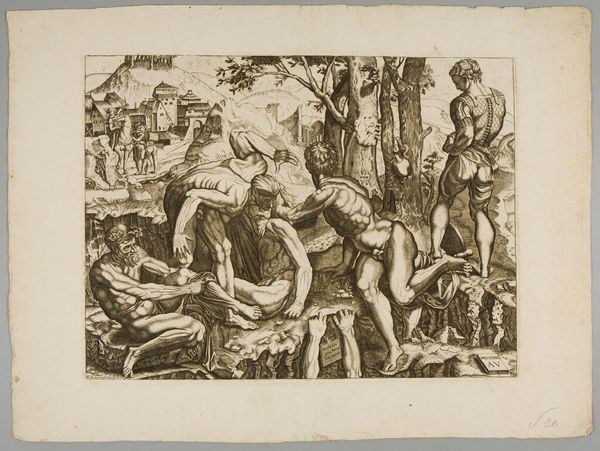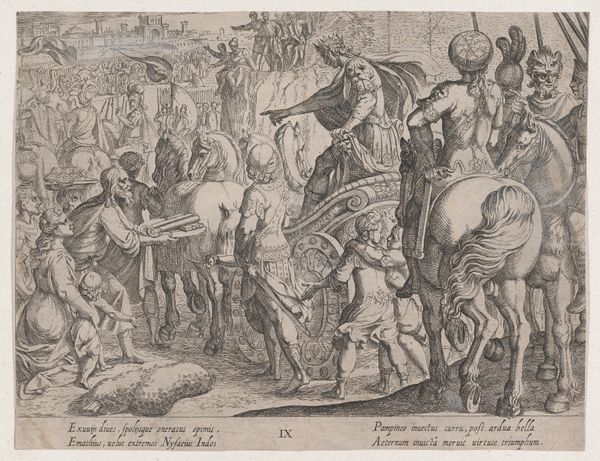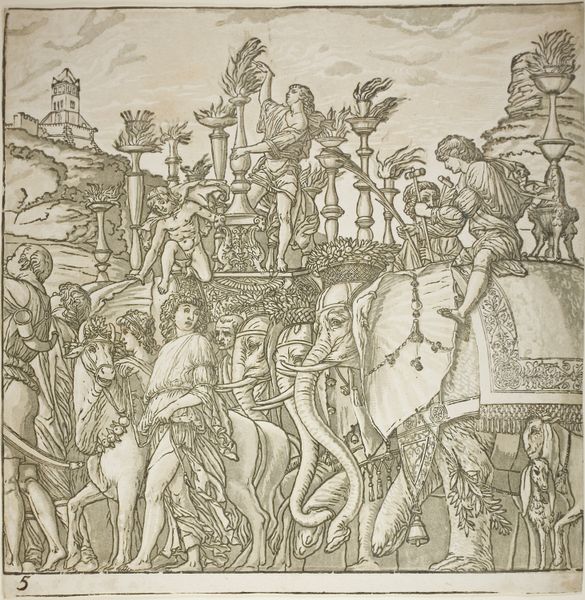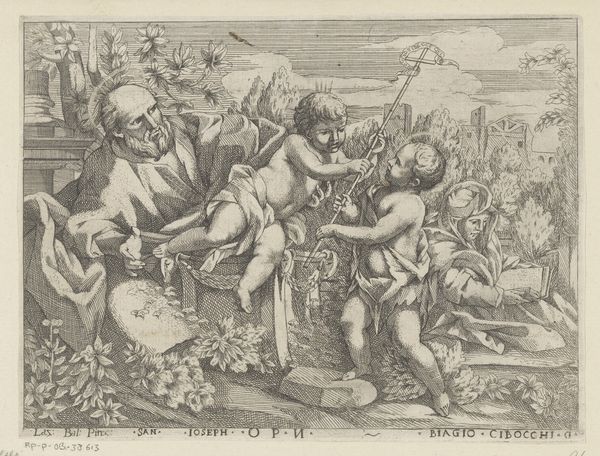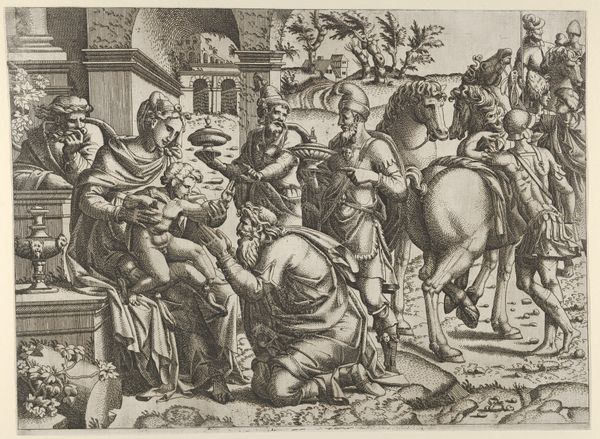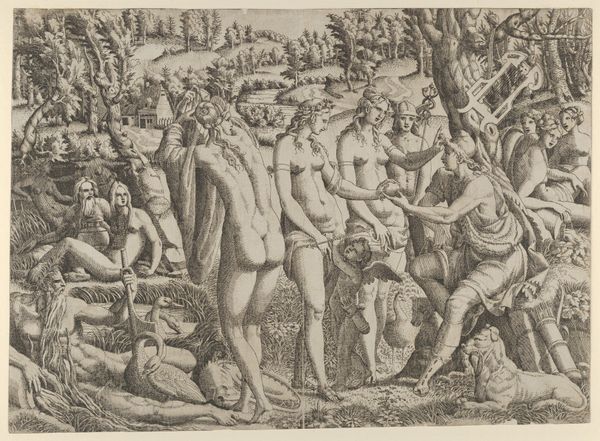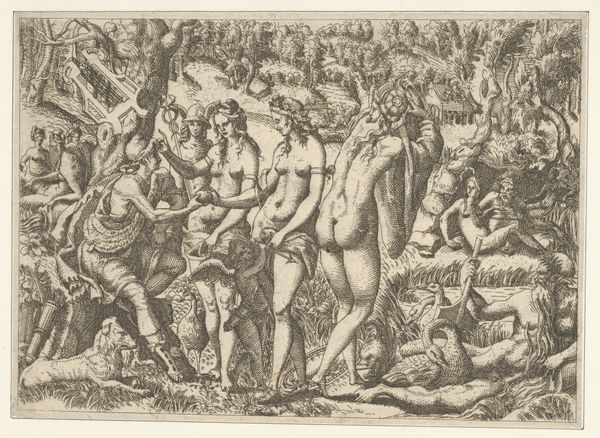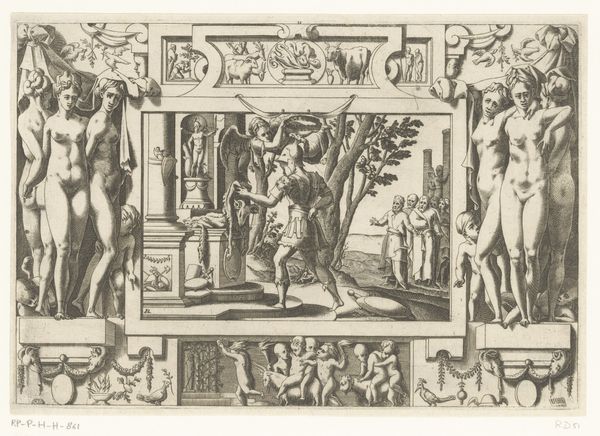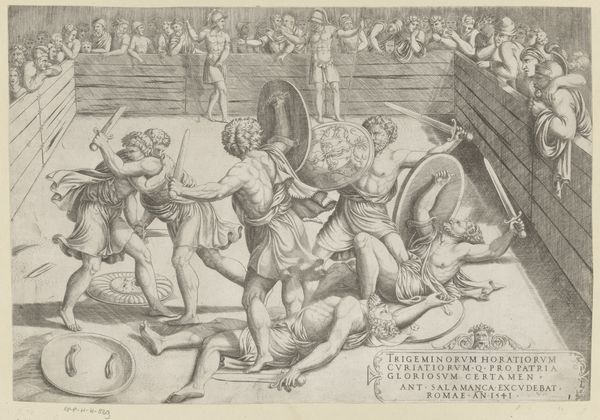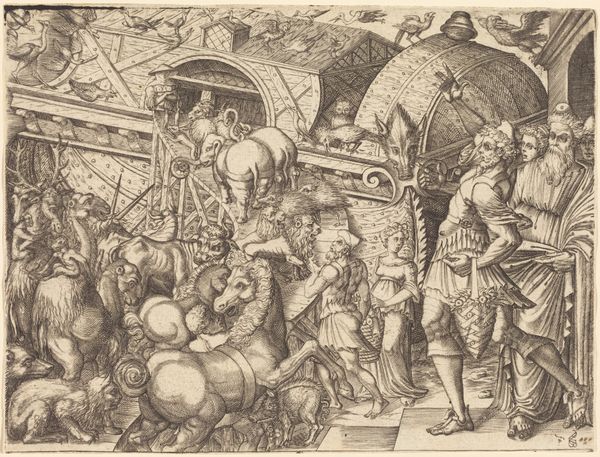
Speculum Romanae Magnificentiae: Roman Horsemen Crossing a Bridge (from Trajan's Column) 1515 - 1527
0:00
0:00
drawing, print
#
drawing
#
pen drawing
#
mechanical pen drawing
# print
#
pen illustration
#
pen sketch
#
old engraving style
#
house
#
junji ito style
#
personal sketchbook
#
soldier
#
pen-ink sketch
#
horse
#
men
#
pen work
#
pencil art
Dimensions: sheet: 11 5/8 x 14 1/2 in. (29.5 x 36.8 cm) trimmed to platemark
Copyright: Public Domain
Curator: Marco Dente created this print, titled "Roman Horsemen Crossing a Bridge," sometime between 1515 and 1527, as part of the "Speculum Romanae Magnificentiae." Editor: It strikes me immediately as a composition dominated by linearity; the etched lines define every form, from the rippling muscles of the horses to the crenellations of the distant architecture. The density of these lines creates a strong contrast. Curator: Indeed. Dente’s approach emphasizes line to render a clear and reproducible image of Roman power and architectural achievements. "Speculum Romanae Magnificentiae," meaning "Mirror of Roman Magnificence," was precisely meant to disseminate images of Roman antiquities, shaping their perception across Europe. Editor: Note how the bridge seems almost to buckle under the weight of the central horse and rider. The implied stress—perhaps unintended—lends a tension to an otherwise straightforward scene. It almost suggests a coming collapse or impermanence to Rome’s magnificence. Curator: Your interpretation offers a valid perspective on the transience inherent in portraying "magnificence." However, within the context of the "Speculum," it is less about foreshadowing ruin and more about documenting extant structures and scenes. The column of Trajan, for example, served as a model and was not free from degradation during the Renaissance. These prints acted, in essence, as historical records. Editor: Perhaps. Though even the deliberate act of replication imposes a certain…interpretation, wouldn't you agree? The selective emphasis, the conscious artistry... This is not a photograph. The figures, especially their pronounced musculature, suggest an idealization – a visual argument as much as a historical document. The horses mirror this with an almost classical presentation of line and symmetry. Curator: An interesting point. Each artist involved inevitably brought their own style and artistic license. Yet, they collectively aimed to provide faithful representations. The work remains an invaluable visual record of a city undergoing both preservation and transformation. Editor: So we're left contemplating not just Roman magnificence, but its early modern interpretation and transmission through ink and paper. Curator: Precisely. A testament to enduring power captured in a fleeting art form.
Comments
No comments
Be the first to comment and join the conversation on the ultimate creative platform.
